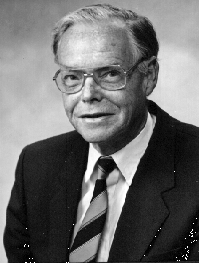Year: 1979
1979, 2nd place award. Theories of gravitation need to rely upon relativistic methodology to be acceptable to established physicists. Does the idea of pushing gravity conform with the relativistic doctrine? There is a connection. Everyone now accepts that there is validity in the formula E = Mc2 and that electrons comply with the relativistic formula for mass increase with speed. These are fundamental in relativity. However, mathematically, there is a strict connection between these two formulae. It is that accelerated mass must not radiate energy as it is all needed to sustain the increase in energy associated with the relativistic mass increase.
Thus zero net energy radiation is essential for accelerated mass. A proof of this is to be found in Professor H. A. Wilson's physics textbook "Modern Physics" published in several editions by Blackie. But we know that an accelerated electron radiates energy continuously according to the Larmor formula and have difficulty reconciling this with the fact that energy exchanges seem usually to be quantum exchanges. The answer to these conflicting aspects of accepted physics surely lies in recognizing that there is no net energy radiation from isolated charge according to the Larmor formula. There can be collective radiation from a multiplicity of charges carrying current in an antenna, but there need to be no net radiation from an isolated charge. Then we can hypothesize that there is electromagnetic energy outflow according to the Larmor formula and an exactly balancing energy inflow (say a neutrino flux) assuring that isolated charges conform with our understanding of energy radiation processes.


